First appreciated by the Romans, later by Venetian nobility and the Habsburgs: the Colli Euganei region near Venice offers interesting wines, unspoilt landscapes, wellness resorts and historic villas. A perfect destination for a short trip to Italy!
Very few people are familiar with the small, hilly Colli Euganei wine-growing region in the northern Italian province of Padua. Even I, who travels a lot in Italy, hadn't been there until recently. A big oversight, as it turned out. Because the hinterland of Venice, characterised by wooded volcanic cones, inspired me with its wines, unspoilt nature and excellent restaurants. Oh, and let's not forget the hot thermal springs!
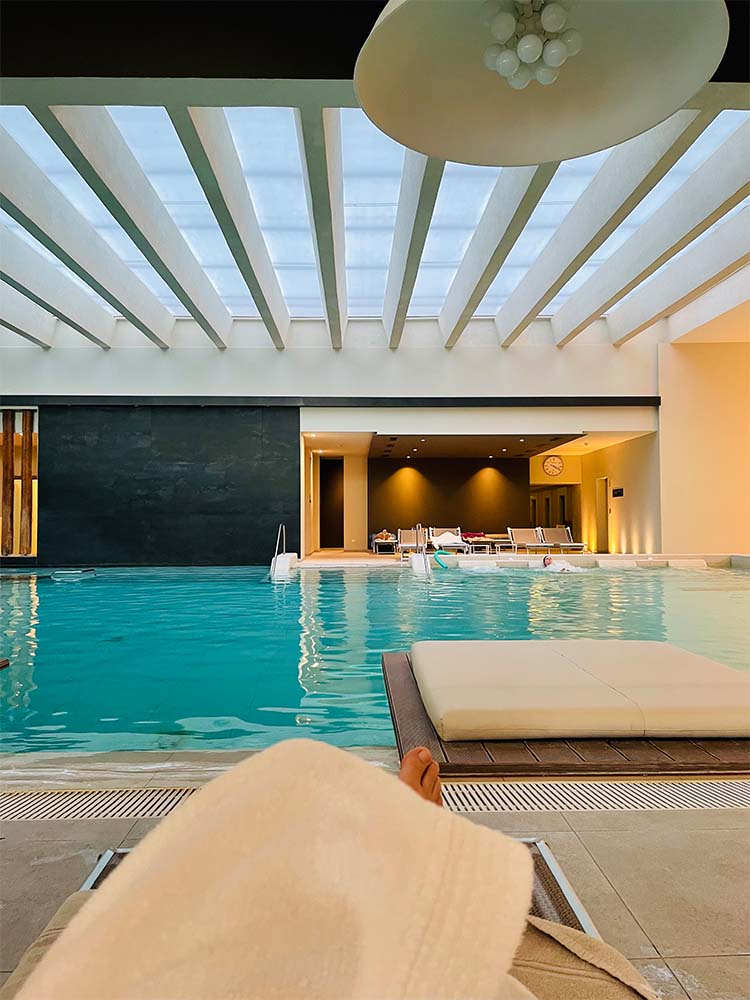
The thermal baths of the Colli Euganei are the perfect place to unwind.
Raffaella UsaiOn my arrival at the chic but somewhat outdated hotel in Montegrotto Terme, I suddenly realise that although the Colli Euganei are less famous for their wines, they are all the more famous for their therapeutic healing powers. The special benefits of the thermal waters were already appreciated by the ancient Romans, who called their facilities "acquae patavinae" (Paduan waters). Their ancient remains can still be seen today.
With 130 thermal facilities and around 220 thermal baths as well as over 13,000 hotel beds, the region is one of the most important spa centres in Europe and attracts thousands of health tourists from home and abroad every year. So anyone interested in fango baths and inhalation therapy as well as wine will feel right at home in one of the countless spa hotels.
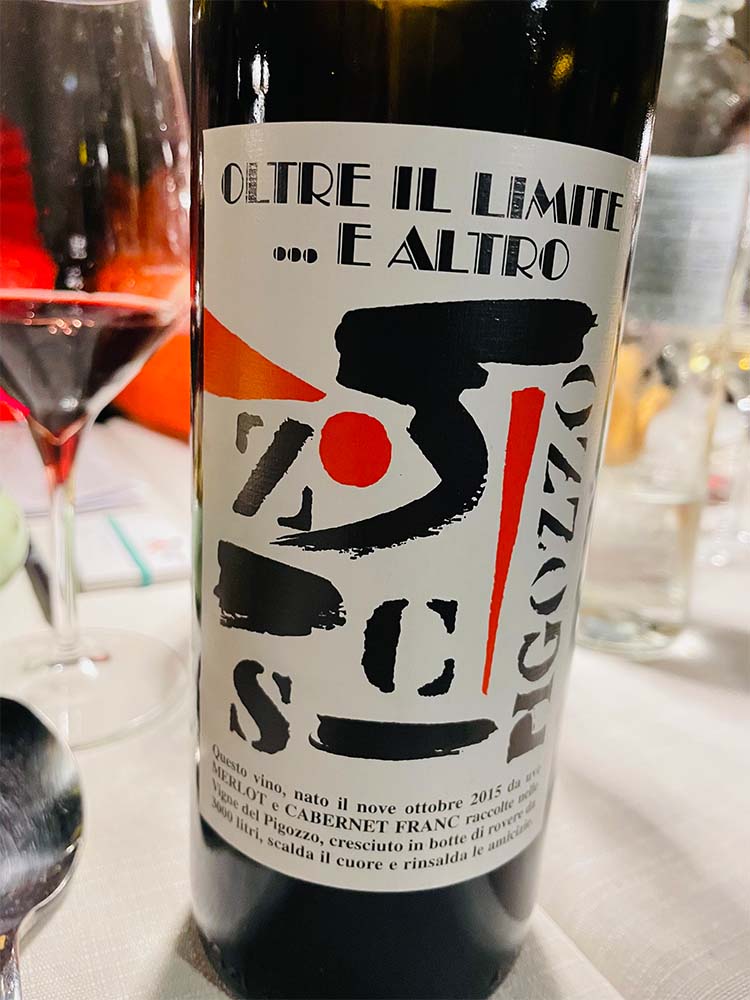
I'm not here for the water, however, but am excited about the first wines to be tasted. At the heart of the appellation are the red wine cuvées made from international grape varieties, which are marketed as Colli Euganei DOC Rosso. For many winegrowers, they are the flagship - and offer remarkably good value for money. With the exception of the wines from the probably best-known Vignalta winery, most bottles are available for less than 20 euros.
However, the classic Bordeaux grape varieties have not only been cultivated here for a few decades, as in Bolgheri, for example. The Counts Corinaldi began planting Merlot and Cabernet Sauvignon on their land in Monselice as early as 1870, making them among the first in Italy. The producers are particularly proud of this history steeped in tradition. Today, Merlot, Cabernet Sauvignon, Cabernet Franc, Carmenère and Raboso grow on around 2,500 hectares of the growing area, the latter two being blended in smaller proportions in the red blends.
In addition to the red wines, there is also the Fior d'Arancio Colli Euganei DOCG made from Moscato Giallo (golden muscatel). It can be produced in three different versions: as a sweet sparkling wine, as a concentrated passito and as a dry wine.
Wineries such as Monteversa and Maeli produce extremely good and unique pet nats from Moscato Giallo. They are fresh and aromatic, have very good grip and great acidity. For me, these "rifermentato in bottiglia" are the most expressive variety of this grape. These wines are bottled as Veneto IGT.
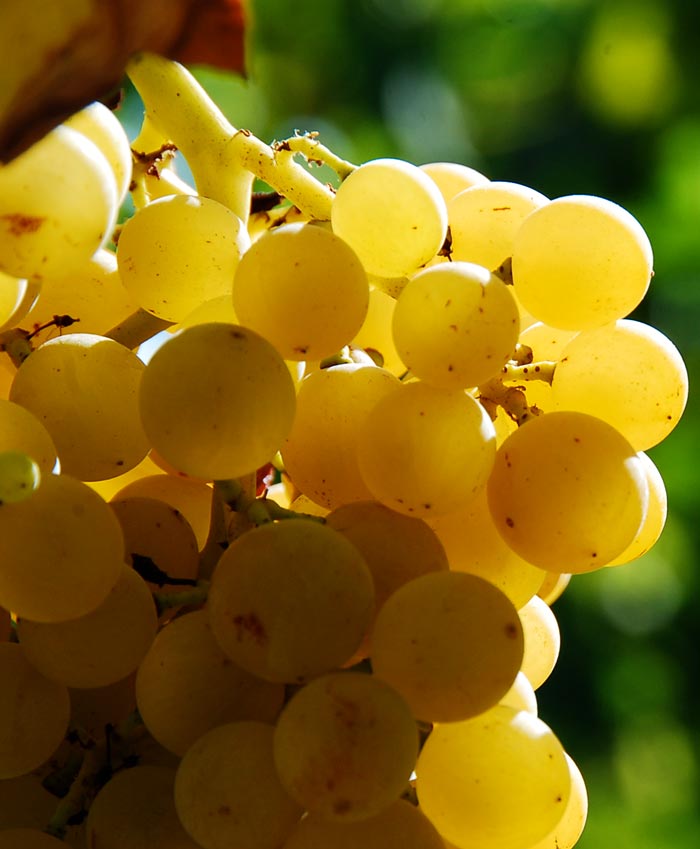
The Fior d'Arancio Colli Euganei DOCG is produced from Moscato Giallo in three versions.
Consorzio Vini Colli EuganeiAnother Colli Euganei speciality is the tank-fermented Serprino DOC. It is made from the Glera grape variety, which is also used for Prosecco. Like its more famous counterpart, the light, sparkling Serprino is drunk as an aperitif, but its sales are very limited locally. Some winegrowers therefore want to have Serprino recognised as a sub-zone of the DOC Prosecco, which is currently the subject of controversial debate in the appellation.
I was particularly impressed by the Serprino from the Ca' della Vigna winery, a young business run by the architect couple Wim Brouwer and Catia Bolzonella.
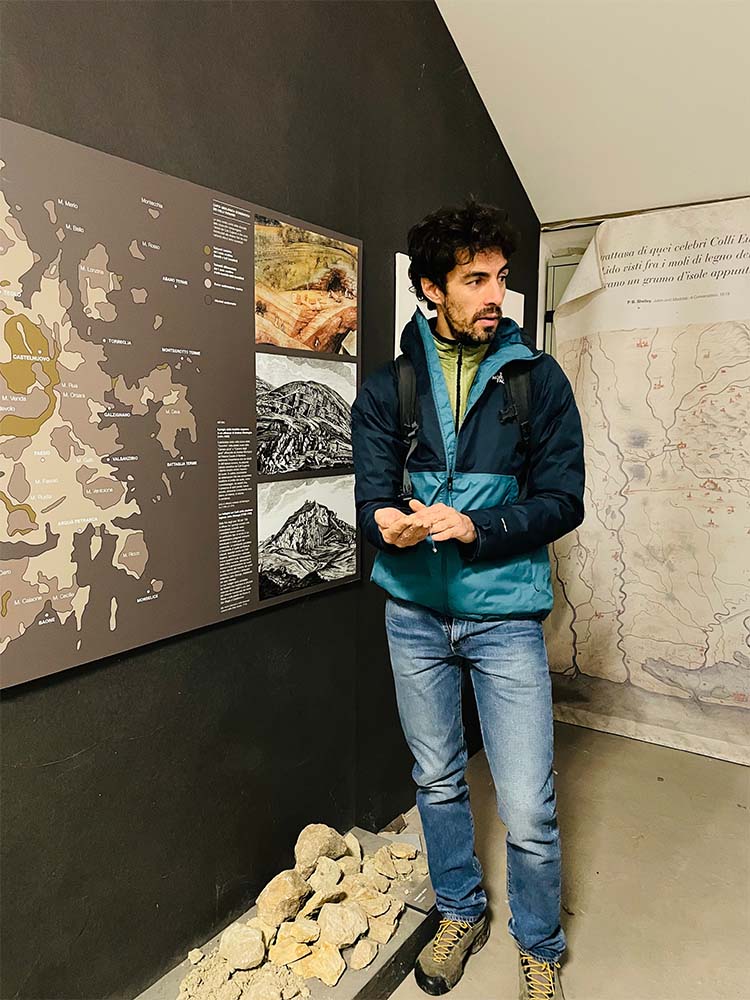
Geologist Francesco Loreggian explains the history of the Colli Euganei at the "Muvi" museum.
Raffaella UsaiThe Colli Euganei were formed between 35 and 43 million years ago. At that time, a series of volcanic eruptions created the hundred or so hills with the unmistakable conical profile. They are up to 600 metres high and can be seen far across the Po Valley. The soils here consist of hard volcanic rocks such as basalt, ryolite, trachyte and latite. Trachyte and limestone were mined in countless quarries over many centuries, which were used to build magnificent squares and palaces in nearby Venice. Trachyte extraction was discontinued a few years ago, as was the extraction of polishable limestone marble for decorative purposes.
The "Muvi" museum provides an impressive insight into the formation of the volcanic cones. A visit is particularly worthwhile for anyone who wants to delve deeper into the geology and history of the region.
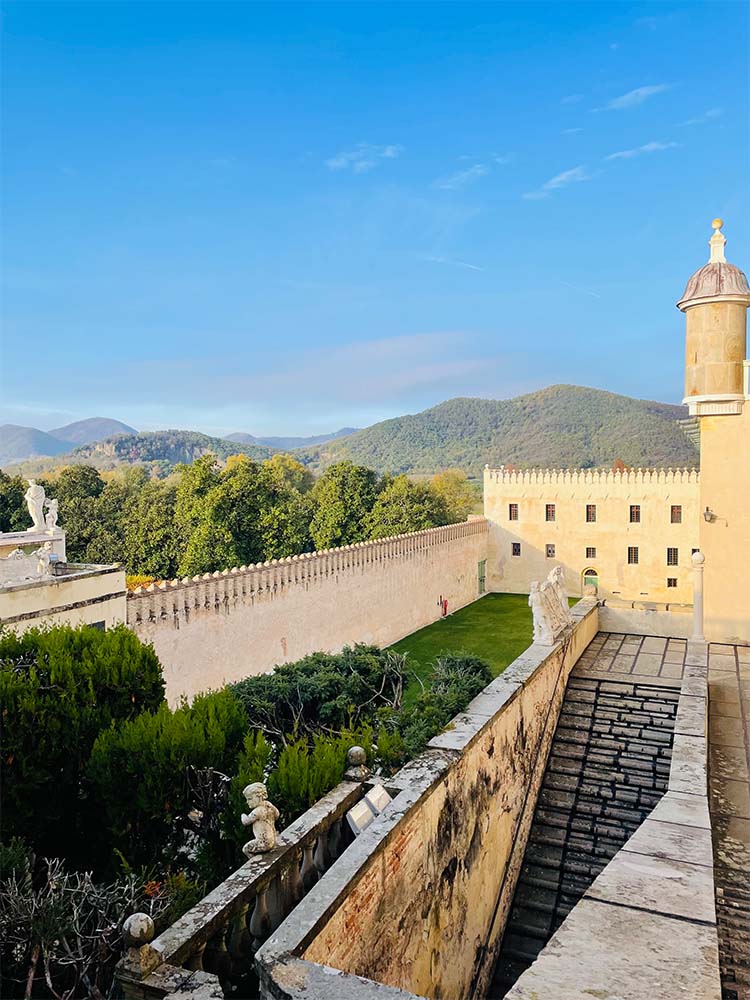
From the extensive terraces of the Castello del Catajo, you have a marvellous view of the surrounding hilly landscape.
Raffaella UsaiEven the Habsburgs celebrated lavish parties in the Colli Euganei, as is impressively demonstrated by the Castello del Catajo in Battaglia Terme. Built in 1570, the castle is considered one of the most beautiful villas in Veneto and was first used as a summer residence by the noble Este family and later by the Emperor of Austria.
A stroll through the magnificent frescoed halls and the beautiful park with its centuries-old trees and statues is a must for anyone visiting the region. From here you can also see the Canale Battaglia, which was built in the 12th century and is part of an extensive canal system that still connects Venice with Padua today.
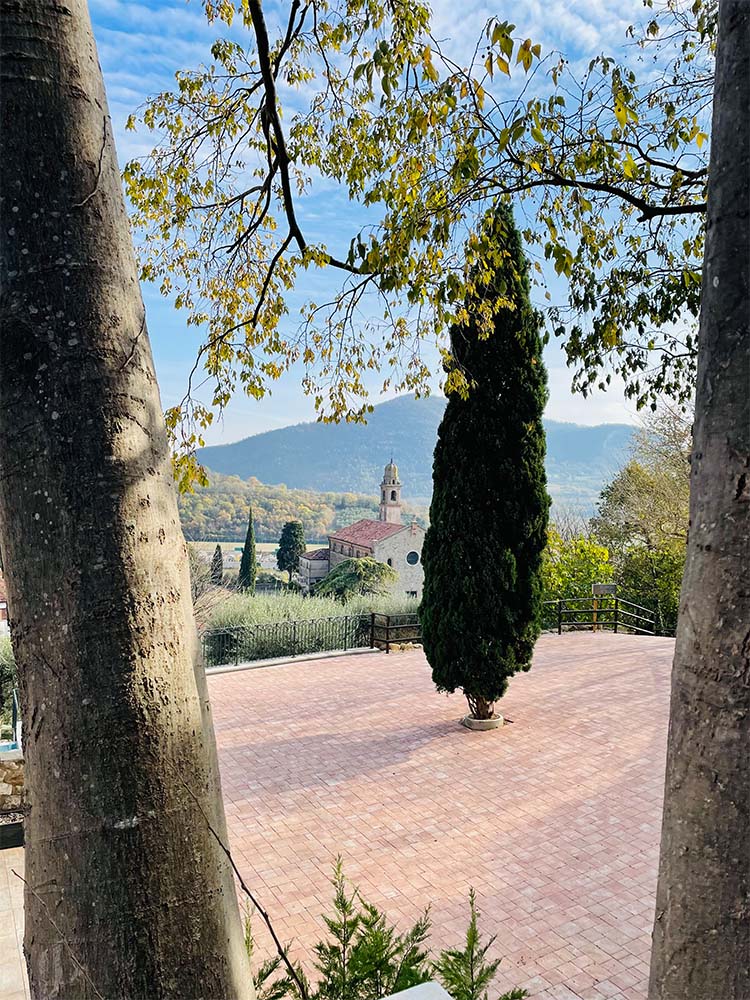
Since 1870, the village of Arquà Petrarca has borne the surname of the famous Tuscan poet Francesco Petrarca.
Raffaella UsaiThe 20,000-hectare nature park "Parco Regionale dei Colli Euganei" is a paradise for hikers and cyclists. "Our biodiversity is impressive. Over 1,600 plant species are native here. Chestnut forests and olive groves meet typical Alpine flora, it's a very special mix that you rarely find in Italy," explains geologist Francesco Loreggian to me on a hike through the vineyards.
The countless jujube trees, which can be seen on every corner, especially in the medieval village of Arquà Petrarca, are also unusual. Their sweet, intense red fruits are also known as Chinese dates or breastberries and are processed here into a liqueur called "Brodo di Giuggiole". If you pay a visit to Arquà Petrarca, you won't be able to avoid a glass of "breastberry soup"!